Is custom CRM development more affordable in 2024? This is a question many businesses are pondering as they look to enhance their customer relationship management capabilities.
As an expert in the field, I can assure you that understanding the dynamics of CRM development costs is crucial for strategic planning. The financial landscape for technology investments continues to evolve, and custom CRM solutions are at the forefront of this transformation. With custom app solutions tailored to your specific needs, optimizing your CRM system can be more effective and budget-friendly. In this article, you will learn:
- Key factors that influence the cost of custom CRM development.
- Effective strategies to manage and reduce these costs.
- Future trends that could impact pricing in the upcoming years.
Let’s dive into what makes custom CRM not just a tool, but a game-changer for businesses aiming to thrive in the digital age.
What is Custom CRM Development?
CRM stands for Customer Relationship Management. This is a software solution that helps business teams manage their many modes of communication and client relationships.
CRM assists businesses in optimizing their processes in order to generate more leads and build strong customer relationships. This programmed is quite complicated and can be classified into several levels. They can be described as a collection of databases, spreadsheets, and apps that collaborate to provide value.
There are several ways to obtain an affordable CRM for small business. For example, you can select ready-made solutions like:
- Zoho CRM
- Bitrix24
- Pipedrive
- NetSuite CRM
- Salesforce Sales Cloud
Why Opt for Custom CRM?
Businesses choose custom CRM development for several compelling reasons:
- Personalization: It ensures that every feature and tool is crafted to fit the specific workflows and customer engagement strategies of the company.
- Scalability: Custom CRMs are built with scalability in mind, allowing businesses to add features and integrations as they grow without significant disruptions.
- Competitive Advantage: By leveraging a CRM system that is uniquely theirs, companies can offer superior customer service and experience, which can significantly differentiate them in the market.
Do you know? Benefits of Using CRM for Your Small Business in 2024
Types of CRM Software
Understanding the various types of CRM software is crucial for any business considering custom development, especially for those working with nearshore software development companies. Each type caters to different business needs and operational scales, influencing the strategic decisions around CRM customization.
1) Operational CRM
Operational CRMs are designed to streamline the day-to-day operations of a business. They focus on automating marketing, sales, and service processes to enhance efficiency and improve customer interactions. Key features include:
- Sales Automation: Tracks customer interactions and automates sales sequences.
- Marketing Automation: Targets potential customers with automated marketing campaigns.
- Service Automation: Improves customer service with ticketing systems and support tracking.
2) Analytical CRM
Analytical CRMs are focused on data analysis and management. They help businesses understand customer behavior, preferences, and trends to make informed decisions. Key features include:
- Data Warehousing: Collects and stores large amounts of data.
- Data Mining: Analyzes data to discover patterns and relationships.
- OLAP Tools: Supports complex queries and reporting.
3) Collaborative CRM
Collaborative CRMs are intended to enhance communication among various stakeholders, including customers, suppliers, and internal teams. They facilitate information sharing to improve service delivery and customer satisfaction. Key features include:
- Interaction Management: Manages all customer interactions across different channels.
- Document Management: Allows document sharing and co-editing among users.
- Partner Relationship Management: Streamlines communication with partners and suppliers.
4) Strategic CRM System
It goes without saying to maintain long-term relationships with customers; teams need to conduct an in-depth analysis of various areas. And this form of CRM, known as a strategic CRM system, helps them do the same by giving them easy access to customer data.
Do you know?
According to a recent study, the global customer relationship management market size was valued at USD 65.59 billion in 2023 and is expected to grow at a significant compound annual growth rate (CAGR) of 13.9% from 2024 to 2030.This growth is driven by the increasing adoption of CRM solutions across various industries. Here’s a quick look at CRM adoption rates by business size:
- Small Businesses: 65%
- Medium Businesses: 75%
- Large Enterprises: 85%
Why Use Customer Relationship Management Software?
Customer Relationship Management (CRM) software is more than just a tool; it’s a strategic asset that can significantly impact a business’s bottom line. Integrating CRM software into your business processes offers numerous benefits that drive growth, enhance customer satisfaction, and improve operational efficiency.
Enhancing Customer Interactions
A CRM system allows businesses to store comprehensive customer data, from contact information to purchase history and personal preferences. This data enables personalized interactions, which are proven to boost customer satisfaction and loyalty. For example, a CRM can automate personalized email campaigns tailored to individual customer behaviors and preferences, significantly increasing conversion rates.
Streamlining Operations
CRM systems automate daily tasks such as data entry, lead tracking, and customer support queries. This automation reduces the workload on staff and eliminates human error, allowing teams to focus on more strategic activities. The efficiency gained translates directly into cost savings and faster response times, which enhance customer perceptions and service quality.
Driving Sales Growth
CRMs provide powerful insights into sales trends, customer behaviors, and market conditions. These insights help businesses identify opportunities for upselling and cross-selling, refine their sales strategies, and better forecast future sales. Statistics show that CRM applications can increase sales by up to 29%, sales productivity by up to 34%, and sales forecast accuracy by 42%.
Improving Decision Making
With real-time data analytics, CRMs help businesses make informed decisions quickly. Analyzing customer data helps predict trends, prepare for market changes, and make strategic adjustments in real-time. This agility gives companies a competitive edge in rapidly changing markets.
CRM Adoption Impact
Here’s a brief overview of the impact of CRM on business performance, highlighting key metrics improved by CRM adoption:
| Impact Area | Improvement Statistic |
|---|---|
| Customer Satisfaction | Up to 47% increase |
| Sales Revenue | Up to 41% increase |
| Marketing ROI | Up to 37% increase |
Must Read once! Reasons Why Platform Solutions Are a Better Choice than Point Solutions
Cost Breakdown of Custom CRM Development Features
A detailed understanding of the cost allocation for each feature in custom CRM development can help businesses make informed decisions and prioritize investments according to their specific needs. Below is an analysis of common features and their associated costs in the development of a custom CRM system. For businesses looking to extend their development capabilities or manage costs effectively, considering offshore software development companies can be a valuable strategy. These companies often offer competitive rates and specialized expertise that can be leveraged in CRM projects.
Core CRM Features and Their Costs
- Contact Management: This is the backbone of any CRM system, allowing businesses to store and manage customer information efficiently.
- Estimated Cost: $5,000 – $15,000
- Sales Automation: Automates the sales process to enhance productivity and reduce manual efforts, including lead tracking and conversion.
- Estimated Cost: $8,000 – $20,000
- Customer Service & Support: Develops tools for managing customer queries and support tickets, crucial for maintaining high customer satisfaction.
- Estimated Cost: $10,000 – $25,000
- Marketing Automation: Tools to automate and track marketing campaigns, email marketing, and customer engagement.
- Estimated Cost: $12,000 – $30,000
- Reporting and Analytics: Provides essential insights through data visualization and reporting capabilities.
- Estimated Cost: $10,000 – $25,000
- Custom Integrations: Includes integrating with existing business tools like email services, social media platforms, or ERP systems.
- Estimated Cost: $5,000 – $15,000 depending on complexity.
Here’s a pie chart representation to visualize how the budget might be distributed across different features in a typical medium-scale custom CRM project:
Managing Feature Costs
- Modular Development: Implementing the CRM in phases can spread out costs and reduce financial burden. Start with essential modules and gradually add complex features.
- Focus on ROI: Evaluate each feature’s potential return on investment. High-impact features might justify their higher initial costs by offering greater long-term benefits.
By comprehensively understanding these costs and planning the CRM features strategically, businesses can optimize their investments and ensure that the CRM system not only fits their needs but also stays within their financial parameters.
If you want to learn? Best Low-Code Platforms to Build Applications in 2024
Factors That Affect Cost to Custom CRM Software
The total cost can vary significantly based on several factors, from the complexity of the desired features to the chosen technology stack. Understanding these variables will help businesses budget more effectively and set realistic expectations.
1) Feature Complexity
The more complex the features, the higher the development cost. Custom integrations, advanced analytics, and AI-driven capabilities can significantly increase the price. Nevertheless, the cost to build Custom CRM software of different complexities is, as mentioned below:
- Simple CRM Software Development Cost $80,000– $250,000
- Mediocre CRM Software Development Cost $200,000– $450,000
- Complex CRM Software Development Cost $400,000– $690,000
2) Software Size
The number of modules and the scale of the CRM system also play a critical role in cost determination.
| Area | Module | Cost |
| Customer Support | Help Desk module | $9,000– $12,000 |
| Knowledgebase module | $2,000– $6,000 | |
| Service Analytics module | $5,000 – $10,000 | |
| Marketing | Campaign management module | $8 000 – $15 000 |
| Client segmentation module | $5,000 – $10,000 | |
| Analytics module | $50,00 to $10,000 | |
| Sales | Account and lead management module | $8,000 – $12,000 |
| Analytics module | $3,000 – $6,000 | |
| Forecasting & planning module | $2,000– $6,000 |
3) Development Team
The location, expertise, and size of the development team can affect costs. For example, outsourcing to regions with lower labor costs can reduce expenses. The cost of hiring software developers is significantly dependent on their location, which in turn influences the entire development cost.
So, let’s have a look at the average cost of hiring software developers in various locations of the world.
| Region | Cost Per Hour |
|---|---|
| North America | $250 to $500 |
| South America | $20 to $50 |
| Europe | $220 to $330 |
| Africa | $50 to $80 |
| Asia | $20 to $85 |
4) Technology Stack
Different technologies might have varying licensing fees, maintenance costs, and developer availability, all of which can impact the overall cost.
- Compatibility: Ensure compatibility with existing systems for smooth integration.
- Scalability: Select technologies that can grow with your business needs.
- Security: Choose technologies with robust security features to protect customer data.
- Developer Availability: Opt for popular technologies to ensure a larger pool of skilled developers.
- Maintenance and Support: Look for technologies supported by active communities and regular updates.
These considerations will help you select a technology stack that’s effective and sustainable for your CRM needs.
To give you a clearer picture, here’s a typical cost breakdown for a medium-scale custom CRM project:
| Cost Component | Percentage of Total Cost |
|---|---|
| Software Development | 55% |
| Project Management | 15% |
| User Interface Design | 10% |
| Quality Assurance | 10% |
| Training and Support | 10% |
It’s important to note that these figures are approximate and can vary widely depending on specific business needs and market conditions.
5) Long-Term Investment Consideration
While the upfront cost of a custom CRM can be substantial, it’s crucial to consider the long-term ROI. Improved customer satisfaction, higher sales, and better data insights can far outweigh the initial investment, making a custom CRM a profitable long-term strategy.
Tips to Reduce Custom CRM Development Cost
While custom CRM development can be a significant investment, there are several strategies that businesses can implement to manage and reduce these costs effectively. By focusing on prioritizing essential features, choosing the right development partner, and planning meticulously, companies can achieve substantial savings.
1) Prioritize Essential Features
One of the most effective ways to cut costs is to focus on the must-have features that directly impact your business goals. Develop a phased implementation plan:
- Phase 1: Implement core functionalities like contact management, sales tracking, and customer support.
- Phase 2: Gradually add more complex features such as marketing automation, custom reports, or advanced analytics based on ROI and user feedback.
2) Choose the Right Development Approach
- Agile Methodology: This approach allows for flexibility and iterative testing, ensuring that the project stays on budget by regularly reassessing priorities and cutting unnecessary expenditures.
- Outsourcing: Consider hiring a development team from regions with lower labor costs but reputable service quality. This can significantly reduce the overall expenditure without compromising on quality.
3) Reuse and Integrate Existing Solutions
- Leverage Open Source Tools: Utilize open-source CRM platforms that can be customized to fit your needs, which can drastically lower the costs associated with proprietary software.
- API Integration: Instead of building from scratch, integrate existing tools and services through APIs to enhance functionality at a lower cost.
4) Optimize the Development Team
- Streamline Team Size: A smaller, more skilled team is often more cost-effective than a larger, less focused group.
- Mixed Expertise: Combine senior and junior developers to balance expertise and hourly rates effectively.
5) Cost-Saving Technologies
Invest in modern, cost-effective technologies that offer both performance and affordability. For instance, using cloud-based solutions can reduce the need for expensive hardware and maintenance costs.
By implementing these strategies, businesses can not only manage but also significantly reduce the costs associated with custom CRM development.
Future Trends in Custom CRM Development Costs
As we look ahead, it’s essential to understand the trends that are shaping the cost of custom CRM development. By anticipating these changes, businesses can better plan and budget for their CRM initiatives, ensuring they remain competitive and efficient in their operations.
Emerging Technologies Reducing Costs
Innovations in technology often lead to more efficient development processes and lower costs over time. Here are a few key technologies that are expected to impact CRM development costs positively:
- Artificial Intelligence (AI): AI is increasingly being integrated into CRM systems to automate data entry, predict customer behavior, and personalize customer interactions. As AI tools become more mainstream, their incorporation into CRM systems is expected to become more cost-effective.
- Cloud Computing: Cloud-based CRM solutions reduce the need for expensive hardware and on-premise installations. As cloud technology continues to advance, we anticipate a decrease in costs associated with data storage and processing power.
- Low-Code Platforms: These platforms allow for the rapid development of custom applications with minimal coding required, significantly reducing development time and costs.
Cost Trends and Predictions
Based on current technology advancements and market analysis, here’s what businesses might expect regarding CRM development costs:
- Decrease in AI Integration Costs: As AI technologies mature and become more accessible, the cost of integrating AI into CRM systems is expected to decrease by up to 20% in the next five years.
- Increased Adoption of Cloud Solutions: With more businesses moving to the cloud, economies of scale may reduce cloud service costs, making cloud-based CRM solutions even more affordable.
- Growth of Low-Code Solutions: As businesses seek faster and more economical development options, the demand for low-code platforms is likely to grow, potentially reducing custom CRM development costs by 15-25%.
Visual Representation: Predicted Cost Changes
Here’s a bar graph to illustrate the predicted changes in cost components for custom CRM development over the next five years:
| Technology | 2024 | 2025 | 2026 | 2027 | 2028 |
|---|---|---|---|---|---|
| AI Integration | -5% | -10% | -15% | -18% | -20% |
| Cloud Services | -3% | -6% | -9% | -12% | -15% |
| Low-Code Development | -5% | -10% | -15% | -20% | -25% |
By staying informed about these trends, businesses can strategically plan their CRM development to capitalize on decreasing costs and technological advancements.
Comparing Costs: 2024 vs Previous Years
Understanding the evolution of custom CRM development costs over the years offers valuable insights into the market dynamics and can help businesses make informed decisions about their CRM strategies. Let’s see how the costs associated with custom CRM development have shifted from past years to 2024 and what factors have influenced these changes.
Custom CRM development costs have been influenced by several factors over the past decade, including technological advancements, market demand, and changes in software development practices. Here’s a brief overview:
- 2014-2018: Costs were relatively high due to the novelty of advanced CRM features and the limited number of skilled developers.
- 2019-2023: Costs began to stabilize and even decrease as cloud computing became more prevalent and as more businesses adopted Agile methodologies, which improved the efficiency of development projects.
Cost Comparison Table: 2014-2024
To illustrate the trends more clearly, let’s look at a comparison table showing average development costs at different intervals:
| Year | Average Development Cost | Notable Factors |
|---|---|---|
| 2014 | $100,000+ | High demand, low supply of skilled labor |
| 2017 | $85,000 | Increased efficiency, growing developer base |
| 2020 | $75,000 | Adoption of cloud and AI technologies |
| 2023 | $65,000 | Further adoption of Agile and low-code platforms |
| 2024 (Projected) | $60,000 | Decrease in AI integration costs, more widespread use of low-code platforms |
The projected decrease in custom CRM development costs for 2024 can be attributed to several key factors:
- Technological Maturation: As technologies such as AI and cloud computing mature, their cost of integration and operation continues to drop.
- Market Competition: Increasing competition among CRM developers and platforms puts downward pressure on prices.
- Process Improvements: Continuous improvements in software development processes, including the use of more efficient methodologies and tools, reduce labor costs and development times.
The trend toward lower costs is expected to continue as new technologies emerge and as the market for CRM solutions becomes more saturated. Businesses should remain alert to these trends, as timing and strategic planning can significantly impact the cost-effectiveness of CRM investments.
Cost-Benefit Analysis of Custom CRM in 2024
Investing in custom CRM development involves assessing not only the costs but also the potential benefits that such a system can bring to a business. A detailed cost-benefit analysis can help companies understand the return on investment (ROI) they can expect in 2024, highlighting the strategic advantages of a custom solution.
Key Benefits of Custom CRM
- Enhanced Customer Experience: Custom CRMs allow businesses to tailor their customer interaction processes precisely, leading to higher customer satisfaction and loyalty.
- Increased Sales Efficiency: By automating sales processes and providing sales teams with better tools for tracking and managing customer interactions, custom CRMs can significantly improve sales efficiency and effectiveness.
- Better Data Insights: Custom CRM systems are designed to integrate seamlessly with other business applications, providing richer data insights and helping companies make informed decisions faster.
Calculating ROI
The ROI of a custom CRM system can be calculated by considering the increased revenue it generates and the cost savings it facilitates. Here’s a simple formula to estimate ROI:
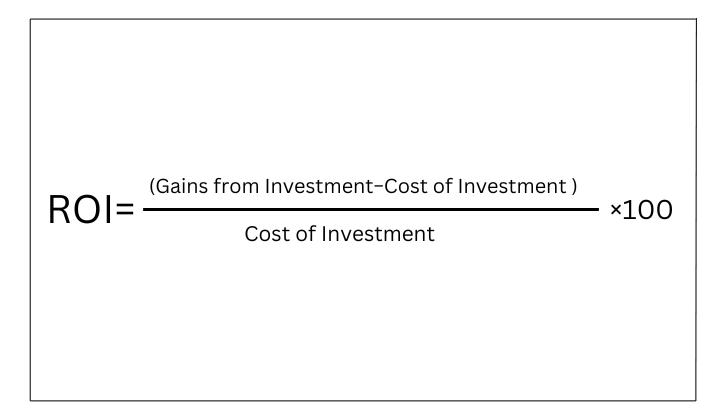
For example, if a custom CRM system costs $100,000 to develop but leads to an annual increase in sales of $150,000 and cost savings of $50,000, the ROI calculation would be:
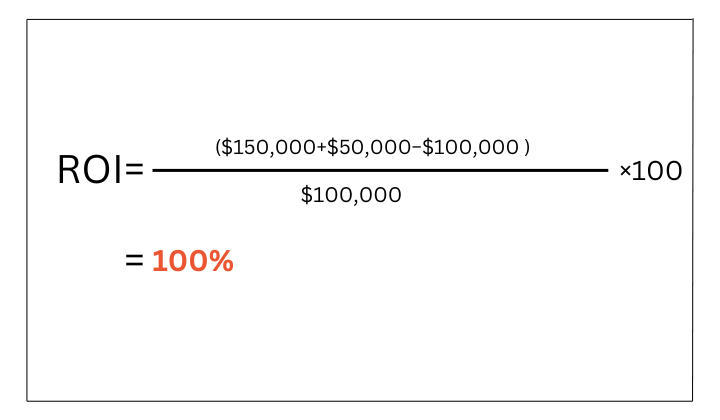
Real-World ROI Examples
- Small Business: After implementing a custom CRM, a small e-commerce company saw a 30% increase in customer retention, translating to an additional $120,000 in revenue annually.
- Medium Enterprise: A manufacturing company experienced a 50% reduction in customer service costs and a 20% increase in sales after CRM customization.
Visual Representation: Benefit Distribution
To better visualize the distribution of benefits from a custom CRM, consider the following table:
| Benefit | Percentage of Total Benefits |
|---|---|
| Enhanced Customer Experience | 40% |
| Increased Sales Efficiency | 30% |
| Better Data Insights | 30% |
Strategic Advantages Beyond ROI
Beyond quantifiable gains, custom CRM systems offer strategic advantages such as:
- Competitive Differentiation: Custom features can provide unique services that set a business apart from its competitors.
- Scalability: As the business grows, the CRM system can evolve to meet new demands without the need for complete replacement.
How to Budget for Custom CRM Development
Effective budgeting for custom CRM development is essential for ensuring that the investment aligns with business goals and delivers maximum value. This section will provide practical tips and strategies to help businesses plan their CRM projects financially while maintaining control over costs.
Establish Clear Requirements
Before setting a budget, it’s crucial to define what you need from your custom CRM. Detailing specific functionalities, integration needs, and scalability requirements will help you avoid unnecessary costs for features that don’t align with your business objectives.
Phased Implementation Approach
Consider implementing your CRM in phases:
- Phase 1: Deploy core functionalities like contact management and basic reporting.
- Phase 2: Integrate more complex features such as marketing automation and advanced analytics based on the initial phase’s success and ROI.
This approach helps spread out costs and allows for adjustments based on early returns and user feedback.
Set a Realistic Budget
Setting a realistic budget involves understanding both the initial development costs and ongoing maintenance and upgrade expenses. Here’s a simple framework to guide your budgeting:
- Development Costs: Typically 70% of the total budget.
- Maintenance and Upgrades: Allocate 30% for ongoing support, updates, and scalability.
Utilize Cost-Saving Technologies
Incorporate cost-saving technologies and methodologies to maximize your budget:
- Cloud-Based Solutions: Reduce initial hardware and IT infrastructure costs.
- Open Source Platforms: Leverage open-source CRM platforms as a foundation to reduce licensing fees.
Budget Planning Table
Here is an example budget distribution table for a mid-sized custom CRM project:
| Cost Component | Estimated Percentage |
|---|---|
| Initial Development | 70% |
| Maintenance and Upgrades | 20% |
| Training and Implementation | 10% |
Monitor and Adjust
Regularly review and adjust your budget as the project progresses. Agile methodologies can be particularly useful here, as they allow for continuous assessment and reallocation of resources based on project needs.
Case Study: Budgeting Success
A tech startup initially budgeted $50,000 for a custom CRM and followed a phased implementation strategy. By focusing on essential features initially and using open-source technologies, they kept the first phase within $35,000, allowing more flexibility for future expansions.
Final Say
As we’ve explored throughout this article, the affordability and value of custom CRM development in 2024 hinge on several dynamic factors. From understanding the different types of CRM software to implementing cost-effective development strategies, businesses can effectively manage their investments in custom CRM solutions.
Related FAQs
What makes a technology stack scalable for CRM?
Scalable technology stacks can handle increased loads without performance degradation.
How do I ensure the technology stack is compatible with my existing systems?
Perform integration testing and consult with systems architects during the planning phase.
What are key security features to look for in a CRM technology stack?
Essential security features include data encryption, secure authentication, and access controls.
Why is developer availability important when choosing a CRM technology?
A larger pool of developers means more resources for development and troubleshooting, potentially lowering costs.
How often should technology used in CRM systems be updated?
Regular updates are crucial to maintain security, compatibility, and performance.
Can I use open-source technologies for CRM development?
Yes, open-source technologies can be a cost-effective option, but ensure they meet your specific security and functionality needs.
What is the impact of technology choice on CRM maintenance costs?
Choosing modern, well-supported technologies can significantly reduce long-term maintenance costs.
How does technology affect the scalability of a CRM system?
The right technology ensures the CRM can expand in terms of data storage, user capacity, and functionality as your business grows.
What should I consider about technology when planning for multi-regional CRM deployment?
Consider technologies that support localization, adhere to regional data protection regulations, and provide reliable performance globally.
How do I choose between custom-built and off-the-shelf CRM solutions?
Consider custom-built solutions for unique requirements or when you need competitive differentiation; off-the-shelf for standard, cost-effective solutions.
Must Read About Trending Tech Blogs
- Cryptonewzhub.com Internet – Detailed Guide
- How Frables Epix Net is Changing Digital Entertainment
- Shortlinkstop.online: Power of Streamlined Link Management
- The Role of Trendzguruji.me Awareness in Shaping Digital Trends
- MyUday.Lupin.com Login: Detailed Instructions for Hassle-Free Access
- Discovering Leomorg: A Deep Dive into Digital Creativity and Cultural Exploration
Are you a professional writer in search of exciting opportunities? Discover your next big project at AppsInsight!



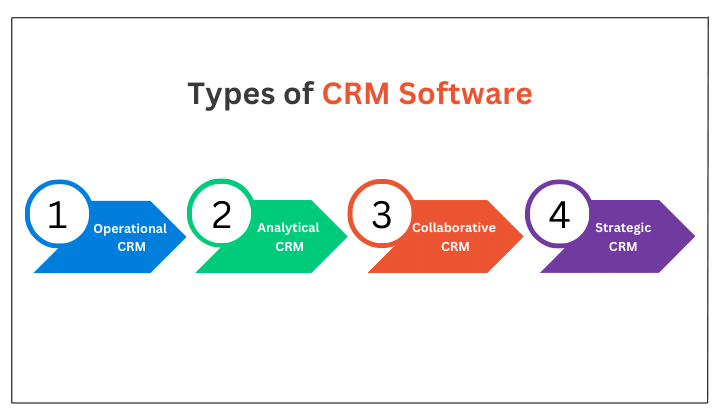
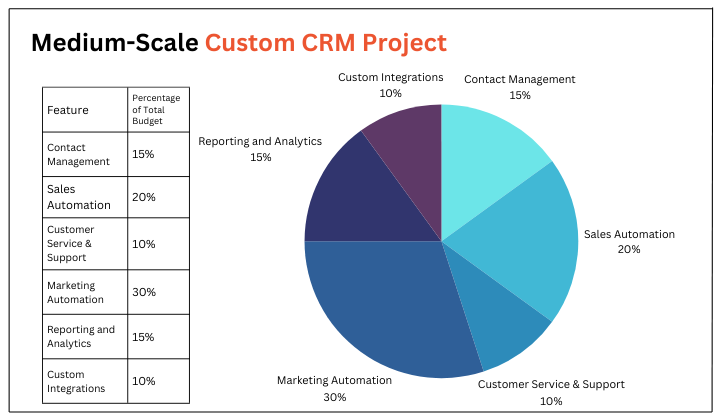
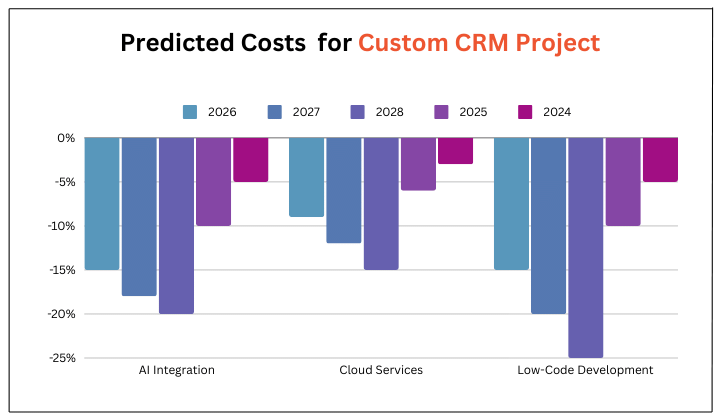


Pingback: How Much Does Logistics App Development Cost? 2024
Pingback: Regular Vs Custom Enterprise Software Development » Apps Insight